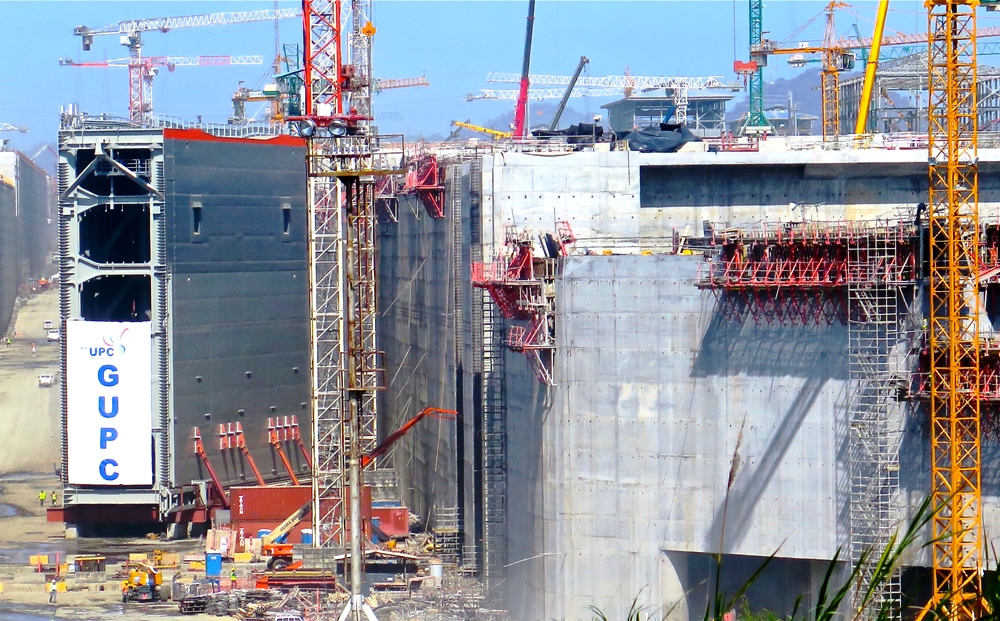Here is another well written report by Keith Schneider at Circle of Blue on the impact of the Panama Canal Expansion.
PANAMA CITY, Panama – It was an elaborate, even theatrical display of national pride and elite engineering. On January 19, Panama’s four-quarter, red and blue star flag gleamed in bright morning sunlight as a 2,300-ton steel gate slid into place inside a colossal new lock of the Panama Canal.
It was the first of eight mammoth gates, ranging in height from seven to nine stories, to be installed in the three concrete locking chambers near the canal’s Pacific entrance. Almost 90 percent complete and scheduled to open for commercial traffic in the spring of 2016, the roughly $US 6 billion canal expansion is expected to double the amount of cargo that crosses the Isthmus of Panama, to 660 million metric tons per year.
Thousands of men and hundreds of trucks and excavators, like a colony of motorized ants, swarm through the construction site to bend steel and pour concrete. The scale of the project to excavate new channels, widen existing shipping corridors, and complete three new lock chambers on the Pacific side and three more close to the Caribbean make the canal expansion a 21st-century parallel to building the Egyptian pyramids.
With its much larger locks lifting and lowering much bigger ships for the day-long crossing, the expanded canal is projected to alter global patterns of energy and food production and trade. Analysts also anticipate that the additional transport capacity will shift water use and supply, particularly in the United States and China, the primary producers and consumers of goods shipped through the canal.
The expansion project’s effects on Panama’s economy and management also are extraordinary. Both the Caribbean and Pacific entrances are swollen with new construction. Proposals for big power generating, fuel storage, logistics, and transport projects in the canal corridor are under review by national authorities.
The canal’s ability to drive economic growth is evident in Panama City, the capital, where an impressive skyline of seaside white towers bloomed in the last decade. The Pacific coast city of 1.5 million people has quickly become a modern maritime hub where jobs are plentiful and employees are needed for almost 100 banks holding over $US 100 billion in assets, hundreds of shipping firms, and busy container terminals.
